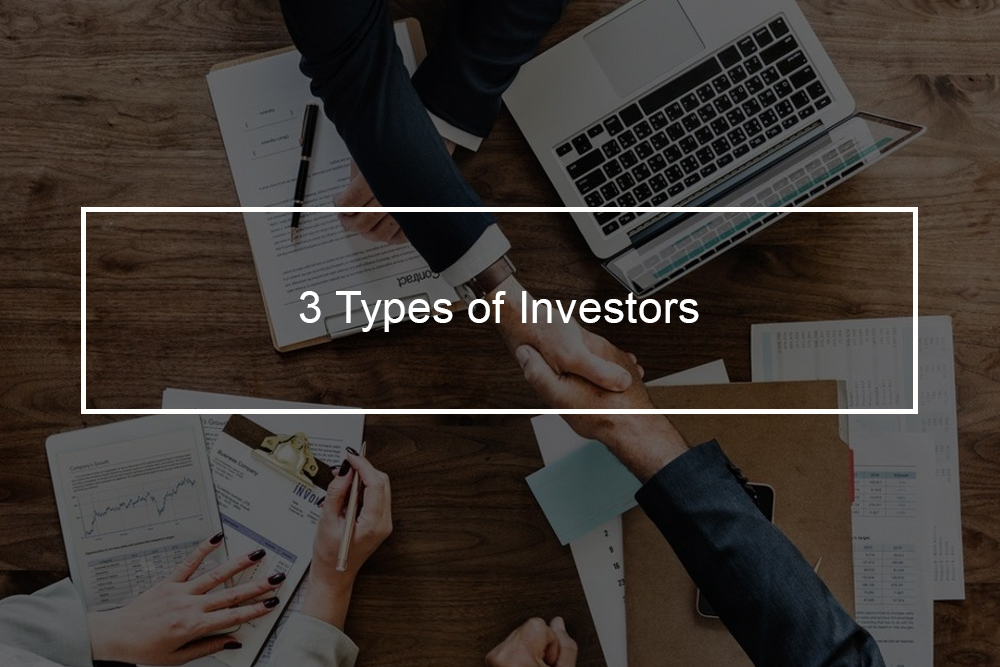
What are the 3 types of investors, and how do they differ?
It is easy to call yourself an investor. Most people across the world claim that they invest, and thus they are investors, but that does not tell much. Usually, you have to wonder what kind of investor they are. This is due to the fact there are investors, and then there are people who dabble in investing. Have you ever wondered why some investors generate more money with less risk compared to others? It is because those people are different types of investors who bring various mindsets to the table. Here are three kinds of investors.
Pre-investor
A pre-investor is a person who is not investing. Often pre-investors are characterized by minimal financial awareness or consciousness. There is little notion of investing, and there is equally little investment or savings to depict that minimal thought. Some pre-investors have a corporate retirement plan; however, that would not exist had the personnel department not set it up for them. The financial world of a pre-investor is primarily about consumption, which takes precedence over investment and savings.
As wage-earners, pre-investors typically live paycheck to paycheck. Moreover, they believe the next pay increase will solve their financial challenges. When pre-investors make more money, they send more, since lifestyle is more essential than financial security. For whatever reason, pre-investors have not woken up to the necessity of owning financial responsibility for their lives and their future. This is totally acceptable, but it’s another thing when someone fails to graduate from it.
Passive investment strategy
As people mature and gain responsibility, most of us graduate from pre-investor status and enter the investment industry via the window of passive investing. This is the most common starting point on the road to financial security.
Most educational services, financial institutions, and web sites support passive investing as a proven, accepted solution. Most of what you acquire from the information accessible on the internet or your local bookstore is the standard wisdom of passive investment strategies. Usually, the passive investor type utilizes all the basics of sound personal financial planning: fund tax-deferred retirement plans, own your home, save at least ten percent of earnings, and asset allocation.
If you follow these basic principles and start early enough in life, then passive investing is possibly all you will ever need to achieve financial security. Passive investment is ideal for people with busy lives, jobs, families, outside interests, or entrepreneurs building businesses.
Typically most people’s lives are already full, leaving less time for developing investment skills. It is challenging to make investing a top priority despite its financial significance. A common effect of having limited time is passive investors frequently delegate the responsibility and authority for their investment choices to experts like brokers, financial planners, newsletter writers, and money managers.
Instead of becoming their expert on investing, passive investors typically depend on other people’s skills for their investment strategy. The defining characteristics of passive investment strategies are their simplicity. They need less knowledge and skill making them available to the general populace. Examples of passive investment strategies include buy and hold with mutual stocks and funds, averaging down, asset allocation, and purchasing real estate at retail price.
Consequences of passive investment strategies
Indeed, you can become acceptably wealthy with these strategies; however, the downside is often required a working lifetime mixed with discipline and regular savings contributions to attain financial independence utilizing the passive investment style. Apart from extreme frugality due to the high savings rates and low spending rates that increase the timeline. The other con to the passive investment strategy is you will take more risk and can anticipate lower returns than investors who have reached the next level of investing.
That is due to the fact passive investors have no value-added or skill element to their anticipated return stream, so they are dependent on the opportunity in the industry for investment return. The passive investor earnestly rides the market roller coaster up and down into the future and deliberately bets his financial security on the hope that the roller coaster will end higher than when he began.
Whereas passive investing is not without its shortcomings, the advantages outweigh the cons for most people, making it the right path for these investors. Typically, passive investing is far better than not investing at all as it begins the procedure of compounding profits returns on invested capital and has the least barrier to entry in terms of knowledge and time required.
If the simplicity of passive investing is vital to get you started, then it is well worth the trade-offs since being a pre investor is far worse. The short-coming of passive investing is the lack of control over your financial security. Since it is passive, it lacks many risk control strategies and overlooks the value included only to those with greater skills. Typically the passive investor type endures lower returns and volatility when compared to the successful execution of an active investment strategy.
Active investor
An active investor usually builds on the foundation of the passive investor. This investor takes the strategy to the next level by running their wealth like a business. The main difference between active and passive investors is that active investors not only receive market-based passive returns but also endures a high-added return stream based on skill, two sources of return in one investment.
This enables the active investor to generate money despite the market conditions or direction and to minimize losses during periods of adversity. This holds the potential to amplify returns and reduce risk. The chief distinction between passive and active investment strategies is passive investors work hard to attain and save money. However, they spend far much less energy and make their money work for them.
On the other hand, active investors work just as hard at making their money work for them as they ever did earn it in the first place. Simply put, active investing is more work, and that is why it is not for everyone. The reason active investors are inclined to spend that additional effort is that they understand the wealth creation game is about return on capital. Small differences in development rates over long periods make significant differences in wealth- far vast differences that could ever be realized by working toward the next pay raise.
The most significant aspect of building your wealth is not how much you make, but how much your money earns, and the period it compounds. Active investors have embraced total responsibility for their financial future by not only creating investment capital as passive investors but by also taking responsibility for the return on their invested capital via active strategies that add value.
The active investor does this by developing a plan that follows certain rules crafted to exploit inefficiencies existing in the marketplace. The word for this is known as edge, and it is the same as the competitive advantage an entrepreneur seeks in business. The competitive advantage should add more value than transaction costs take away, or you will not profit.
Without getting too sophisticated, the only way to build an investment return in excess of market rates with consistency is if inefficiencies exist that can be profited from in a business such as fashion. Investment edge builds profits that are equal to the inefficiency afforded by the market after subtracting the cost to exploit the inefficiency. Ideally, there is no such thing as the best investment strategy. Every type of investing has its trade-offs, and there is no single strategy that will be right for everyone.
For instance, some people have successful businesses and are required to center their energy on growing their business. They should not be distracted by the time commitment essential for active investing. Other people with lower incomes or who start investing later in life have less hope for a secure retirement plan without the benefit of an investment strategy. Note that every person is unique, and there is an appropriate investment style at an appropriate period for them.












